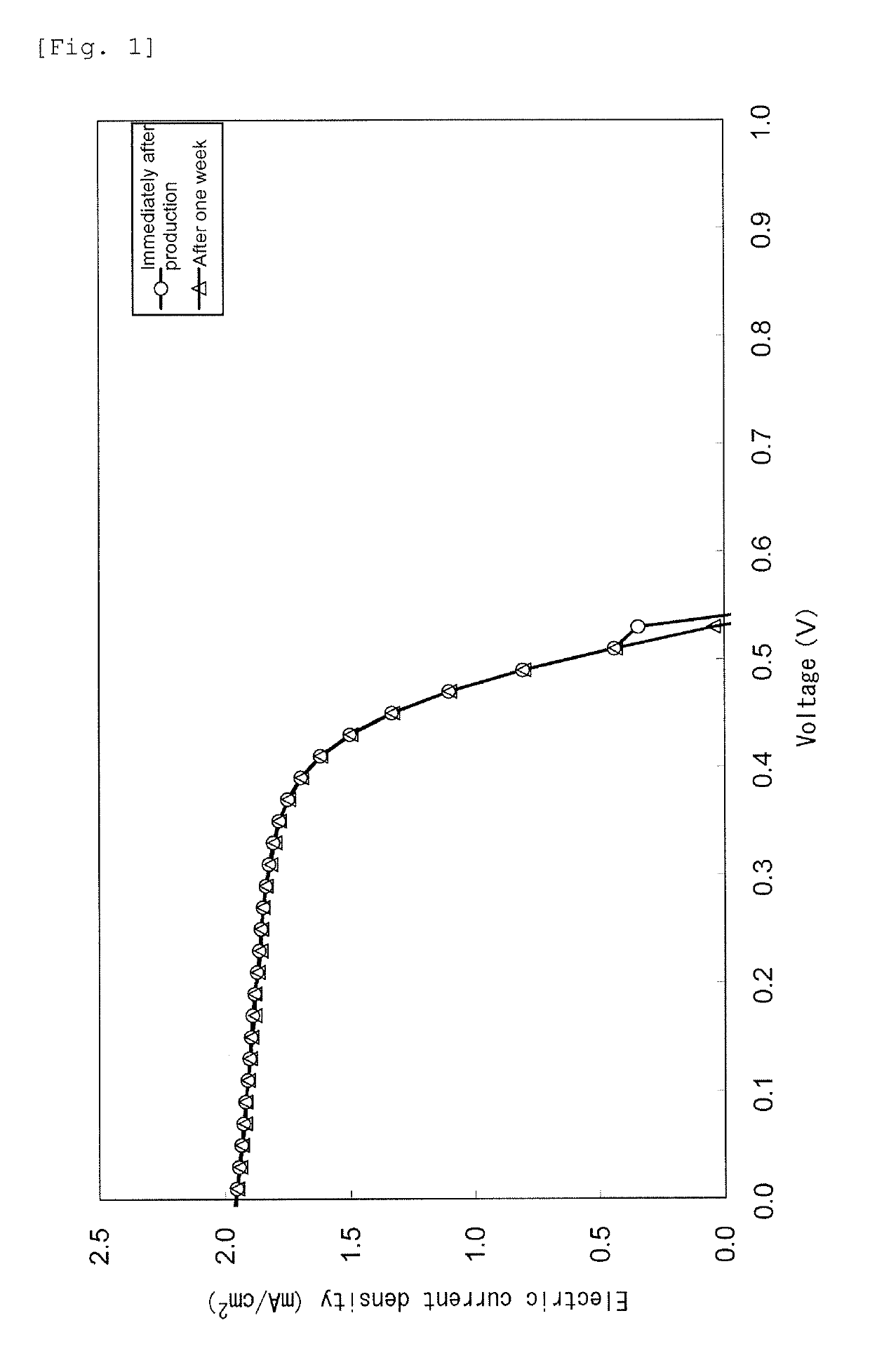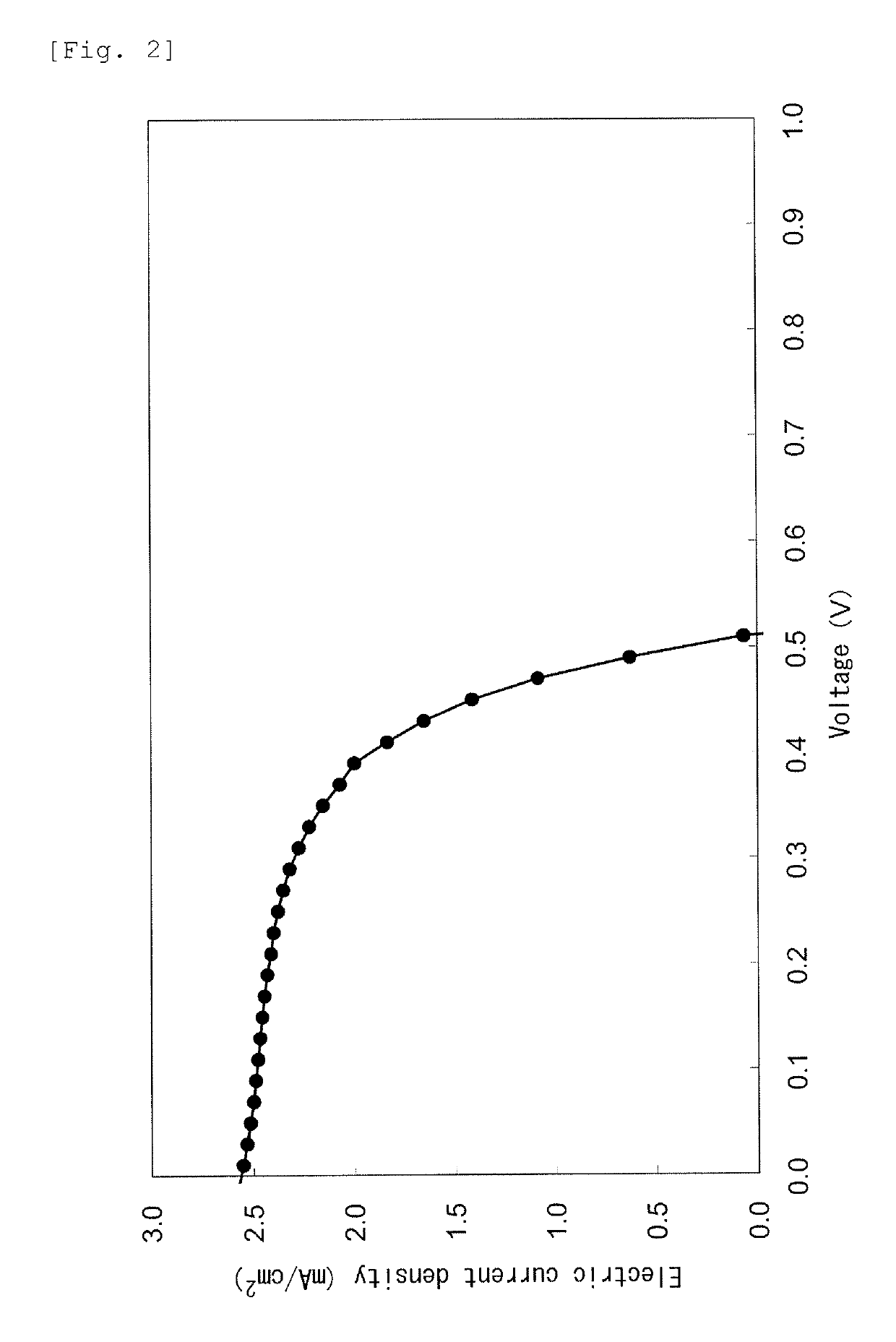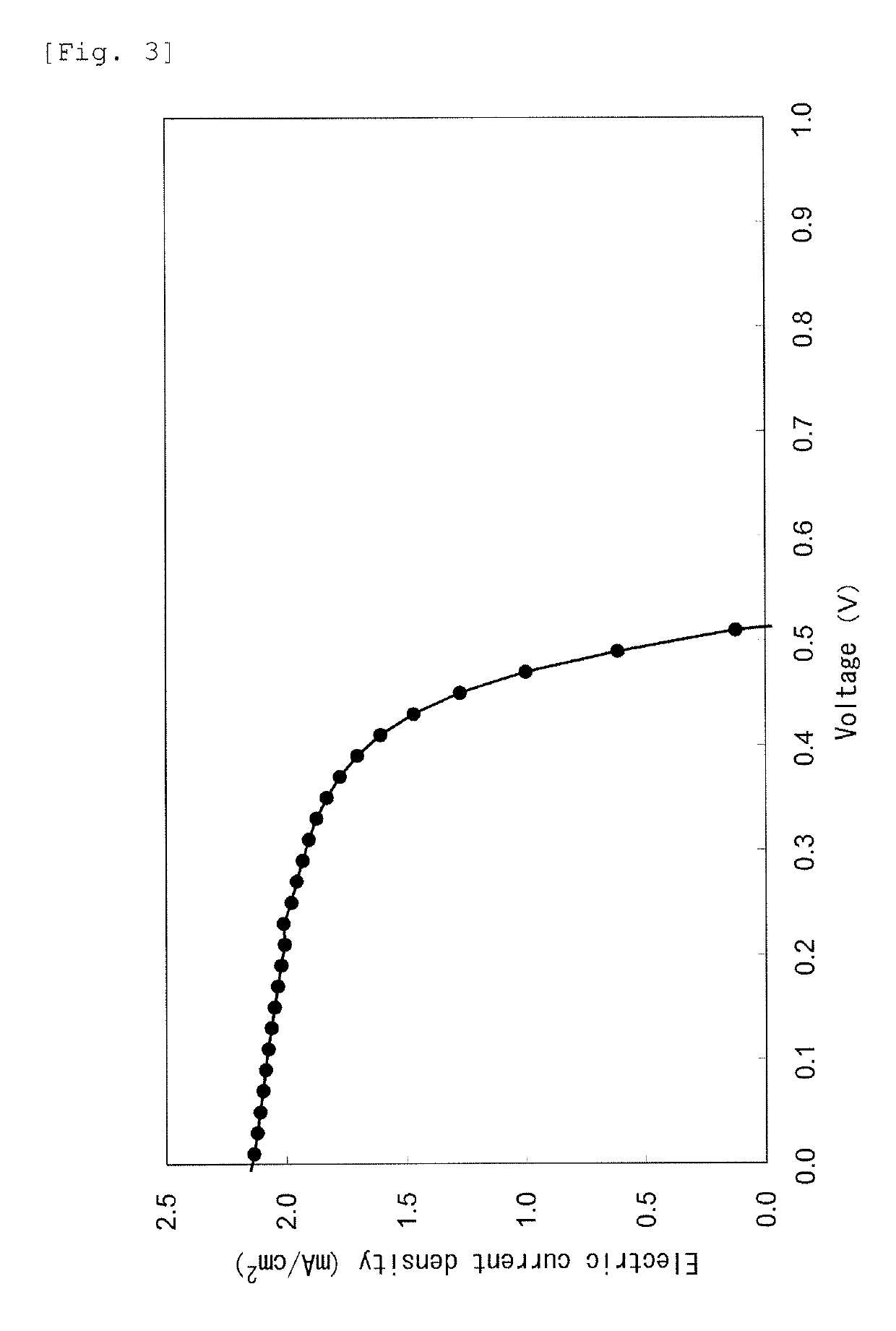Photoelectric conversion layer composition and photoelectric conversion element
omposition technology, applied in the direction of electrolytic capacitor manufacturing, final product manufacturing, sustainable manufacturing/processing, etc., can solve the problems of inefficiency in weak light conversion, metal oxide nanoparticles easily peeling (or separating) from the substrate, and achieve excellent photoelectric conversion characteristics , the production process of a photoelectric conversion layer can be simplified, and the adhesion is high
- Summary
- Abstract
- Description
- Claims
- Application Information
AI Technical Summary
Benefits of technology
Problems solved by technology
Method used
Image
Examples
example 1
[0130]A titanium oxide dispersion was prepared by mixing 10 parts by weight of a titanium oxide particle (“ST-01” manufactured by Ishihara Sangyo Kaisha, Ltd., average primary particle diameter: 7 nm, specific surface area: 300 m2 / g, anatase-form crystal), 25 parts by weight of an anionic-polymer-containing dispersion (“Nafion DE2021” manufactured by DuPont, 20% dispersion containing water and 1-propanol, ion exchange capacity: 0.95 to 1.03 meq / g, pH (25° C.)=7, area for one molecule to occupy: about 0.024 nm2) (that is, 5 parts by weight of an anionic polymer), and 65 parts by weight of methanol.
[0131]The resulting titanium oxide particle dispersion was applied on an ITO layer of an ITO-attached glass substrate (manufactured by Luminescence Technology Corp., size: 25 mm×25 mm, thickness of ITO layer: 0.14 μm) by squeegeeing and then dried at 70° C. in atmosphere (thickness of dried coat: 5 μm). The dried substrate was immersed in a dye solution [a solution of N719 dye (manufactured...
example 2
[0134]A dye-sensitized solar cell was produced and evaluated in the same manner as in Example 1 except that a titanium oxide (manufactured by Daicel Corporation, rutile-form crystal) was used instead of the titanium oxide particle (“ST-01” manufactured by Ishihara Sangyo Kaisha, Ltd.) in Example 1. FIG. 2 shows an output characteristic observed one week after the cell was produced.
example 3
[0135]A titanium oxide dispersion was prepared by mixing 10 parts by weight of a titanium oxide particle (“ST-01” manufactured by Ishihara Sangyo Kaisha, Ltd., average primary particle diameter: 7 nm, specific surface area: 300 m2 / g, anatase-form crystal), 25 parts by weight of an anionic-polymer-containing dispersion (“Nafion DE2021” manufactured by DuPont, 20% dispersion containing water and 1-propanol, ion exchange capacity: 0.95 to 1.03 meq / g, pH (25° C.)=7, area for one molecule to occupy: about 0.024 nm2) (that is, 5 parts by weight of an anionic polymer), 0.1 parts by weight of a dye (N719, manufactured by Tokyo Chemical Industry Co., Ltd., molecular weight: 1188.57, area for one molecule to occupy: about 1 nm2), and 65 parts by weight of methanol.
[0136]The resulting titanium oxide particle dispersion was applied on an ITO layer of an ITO-attached glass substrate (manufactured by Luminescence Technology Corp., size: 25 mm×25 mm, thickness of ITO layer: 0.14 μm) by squeegeeing...
PUM
| Property | Measurement | Unit |
|---|---|---|
| thickness | aaaaa | aaaaa |
| temperature | aaaaa | aaaaa |
| particle diameter | aaaaa | aaaaa |
Abstract
Description
Claims
Application Information
 Login to View More
Login to View More - R&D
- Intellectual Property
- Life Sciences
- Materials
- Tech Scout
- Unparalleled Data Quality
- Higher Quality Content
- 60% Fewer Hallucinations
Browse by: Latest US Patents, China's latest patents, Technical Efficacy Thesaurus, Application Domain, Technology Topic, Popular Technical Reports.
© 2025 PatSnap. All rights reserved.Legal|Privacy policy|Modern Slavery Act Transparency Statement|Sitemap|About US| Contact US: help@patsnap.com



